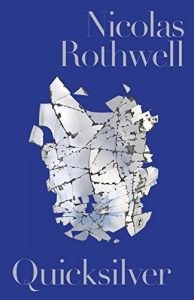Rothwell’s chief subject is always the inland: the mystic Kurangara cult that flourished in the Kimberley; the story of the Western Desert artists, their works and their eventual fate; the tracks across the wilderness of Colonel Warburton and George Grey; the bush dreams and intuitions of D. H. Lawrence and the landscape word-portraits by the great biographer of nature Eric Rolls.
In Quicksilver Rothwell masterfully takes us in search of the sacred through place and time, in an enchanting reverie of calm wondering.
Nicolas Rothwell is the award-winning author of Belomor, Heaven & Earth, Wings of the Kite-Hawk, Another Country, The Red Highway and Journeys to the Interior. He is a senior writer for the Australian.
‘Fluent and expressive prose, which always seems to be moving towards the rhapsodic while stopping short of actual indulgence.’ Age
‘Nicolas Rothwell is a weird and wonderful writer. In this new book, Quicksilver, he takes the form of nonfiction and turns it into an extraordinary drama of spiritual quests and cultural hauntings.’ Australian
‘Nicolas Rothwell’s Quicksilver also straddles the line between memoir and reportage. He is a worldly yet desert-bound writer, one who can look at a lizard baking on a rock and think of Maxim Gorky and Leo Tolstoy.’ Australian
‘It is impossible to understand Australia without venturing into the interior and far reaches of the continent. Divining the sacred, Rothwell moves effortlessly from Eastern Europe and Soviet Russia to the Pilbara.’ Mark McKenna, Best Books of 2016, Australian Book Review
‘The Czech-Australian journalist Nicolas Rothwell could be described in many ways, but perhaps most economical is as wanderer and wonderer: across territories, eras, peoples and cultural boundaries. This collection of essays takes us to the Australian interior, to the High Tatra in Slovakia, to the ruptures and upheavals of central Europe in the 1980s, and to the prison camps of the Soviet Union: Gorky, Tolstoy, Tarkovsky, Darwin, Lawrence are some of our travelling companions. Its title piece is an astonishingly suggestive and beautiful linking of the life and times of Jewish mystic and cult leader Jacob Frank to the latter-day exploration—or exploitation—by outsiders of the Aboriginal artists of the Western Desert.’ Guardian












